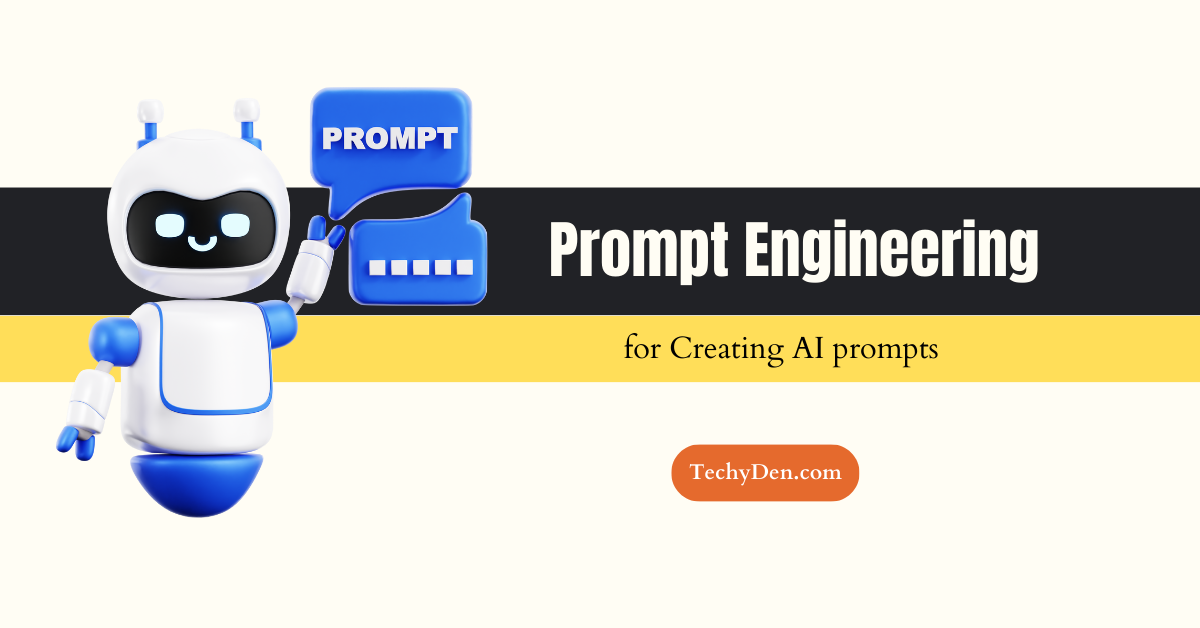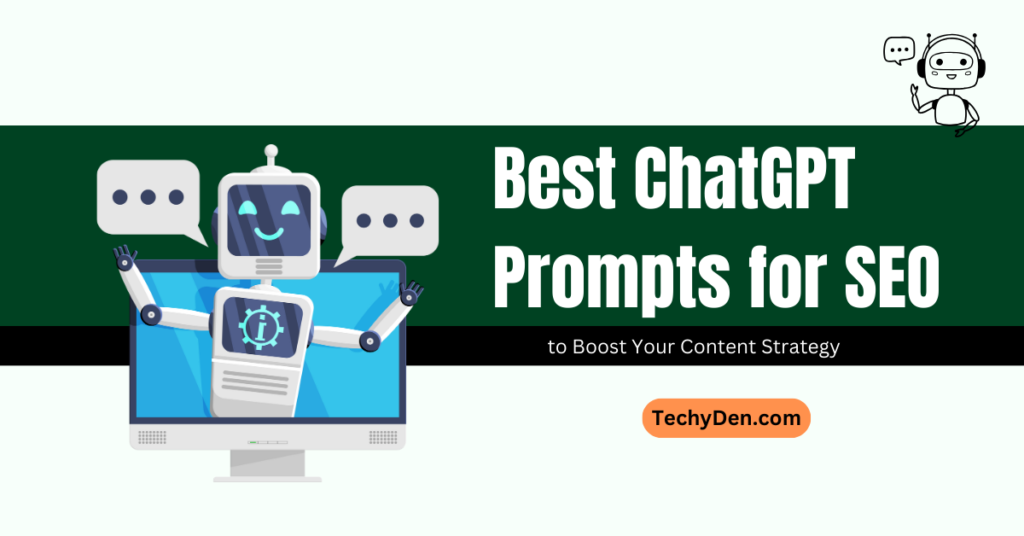In the rapidly evolving landscape of artificial intelligence, language models have emerged as powerful tools capable of generating human-like text, answering questions, and engaging in creative writing tasks.
However, the effectiveness of these AI systems heavily relies on the quality of the prompts provided to them. Prompt engineering, the art of crafting precise and contextual prompts, has become a crucial skill for harnessing the full potential of language models.
What is prompt engineering?
Prompt engineering refers to designing and refining the input prompts or instructions given to AI language models to elicit desired outputs.
These prompts serve as the model’s initial guidance, shaping the context, tone, and direction of the generated text. Practical prompt engineering involves carefully curating the prompt’s wording, structure, and framing to optimize the model’s performance and align its responses with the intended goals.
Prompt Engineering Principle
Prompt engineering, a dynamic and essential field, is guided by several fundamental principles that are crucial for creating effective prompts:
- Clarity and Specificity: Prompts should be clear, concise, and unambiguous, leaving little room for misinterpretation. Providing specific instructions and context helps the model better understand the desired output and reduces the likelihood of irrelevant or off-topic responses. Clarity can be achieved by using simple language, avoiding jargon or ambiguous terms, and structuring the prompt logically and efficiently.
- Task Framing: Properly framing the task or goal within the prompt is crucial. This involves explicitly stating the objective, such as generating a blog post, answering a question, summarizing a text, and providing necessary contextual information to guide the model’s response. Effective task framing helps align the model’s output with the intended purpose and ensures that it stays focused on the desired goal.
- Prompt Structure: The structure of the prompt is not just a formality but a powerful tool that can influence the model’s interpretation and output. It is common for well-structured prompts—which you can create—to begin with a section that provides background information, then to ask specific questions or provide instructions, and finally to end with examples or suggested output formats. A clear structure aids comprehension and provides a logical flow for the model, putting you in control of the model’s understanding.
- Priming and Few-Shot Learning: Priming refers to providing the model with a few examples of desired outputs, known as few-shot learning. This technique can help the model grasp the intended format, tone, and style, improving the quality of its generated text. By showcasing exemplary outputs, the model can better understand the expectations and mimic the desired characteristics in its generation.
- Iterative Refinement: Prompt engineering is a continuous and iterative process. By analyzing the model’s outputs and refining the prompts, developers can steadily enhance the quality and accuracy of the generated text. This iterative approach allows for gradual optimization and fine-tuning of the prompts, ensuring they consistently produce the desired results.
- Context Awareness: Context is a critical consideration in prompt engineering. Effective prompts consider the broader context in which the model’s output will be used or consumed, including the target audience, domain, and intended application. This context-aware approach ensures the generated text is appropriate, relevant,t, and tailored to the specific situation.
- Consistency and Coherence: Prompts should be designed to elicit consistent and coherent outputs from the language model. This involves ensuring that the instructions, examples, and desired formats align with one another and do not contradict or send mixed signals to the model. Consistency and coherence in prompts contribute to more reliable and predictable outputs.
- Ethical Considerations: As language models can potentially generate biased, harmful, or inappropriate content, prompt engineering must incorporate ethical principles and guidelines. This includes avoiding prompts that could propagate biases, stereotypes, or misinformation and actively promoting fairness, inclusivity, and responsible language generation.
Prompt engineers can craft prompts that effectively guide language models by adhering to these principles, maximizing their potential for generating high-quality, relevant, and contextually appropriate outputs across various applications and domains.
The Importance of Prompt Engineering
Prompt engineering plays a pivotal role in the success of language model applications across various domains. Well-crafted prompts can significantly enhance the generated text’s quality, relevance, and coherence, ensuring that the model’s outputs meet the specific requirements of the task at hand.
Conversely, poorly designed prompts can lead to suboptimal or nonsensical outputs, undermining the model’s capabilities and limiting its usefulness.
Applications of Prompt Engineering
Prompt engineering has a wide range of applications across various industries and domains, including:
- Content Generation: Crafting effective prompts can enable language models to generate high-quality content, such as articles, blog posts, stories, and marketing copy, streamlining the content creation.
- Question Answering: By providing well-designed prompts, language models can serve as powerful question-answering systems. They retrieve relevant information from vast datasets and provide concise and accurate responses.
- Summarization and Analysis: Prompt engineering can facilitate the creation of summaries, reports, and analyses from large volumes of text, allowing for efficient information extraction and synthesis.
- Creative Writing: Language models can be prompted to engage in creative writing tasks, such as generating poetry, fiction, or screenplays, opening new avenues for artistic expression and collaboration between humans and AI.
- Customer Service and Conversational AI: Effective prompts can enhance the capabilities of conversational AI assistants, enabling them to understand better and respond to user queries, improving the overall customer experience.
Challenges and Considerations
While prompt engineering offers significant benefits, it also presents several challenges and considerations:
- Bias and Ethical Concerns: Language models can inadvertently perpetuate biases in their training data or reflect societal biases through their outputs. Prompt engineering must address these issues by incorporating debiasing techniques and promoting fair and ethical language generation.
- Domain Specificity: Crafting effective prompts often requires domain-specific knowledge and expertise. Developers may need to collaborate with subject matter experts to ensure prompts accurately capture the nuances and terminology of a particular field.
- Scalability and Consistency: As the number of prompts and use cases grows, maintaining consistency and ensuring scalability become increasingly challenging. Developing standardized prompt engineering practices and tools can help address this issue.
- Intellectual Property and Privacy: Language models can generate text that infringes on intellectual property rights or compromises sensitive information. Prompt engineering strategies must consider these risks and implement appropriate safeguards.
Best Practices for Prompt Engineering
To optimize the effectiveness of prompt engineering, developers, and organizations can adopt the following best practices:
- Collaborate and Iterate: Involve diverse stakeholders, subject matter experts, and end-users in the prompt engineering process. Continuously refine and iterate on prompts based on feedback and performance evaluations.
- Maintain Style Guides: Develop style guides and templates for prompt creation, ensuring consistency in tone, structure, and formatting across different prompts and use cases.
- Leverage Prompt Libraries: Build and maintain libraries of well-crafted prompts for everyday tasks or domains, allowing for easy reuse and adaptation.
- Implement Prompt Testing and Validation: Establish processes for testing and validating prompts, including techniques like human evaluation, automated metrics, and adversarial testing, to identify and mitigate potential biases or issues.
- Stay Updated: Stay informed about the latest advancements, techniques, and best practices in prompt engineering as the field evolves rapidly.
The 5-Step ChatGPT Prompt Mastery Blueprint

Crafting an effective prompt is ike painting a masterpiece – it requires a well-thought-out approach and the right techniques to bring out the best in ChatGPT. Follow this 5-step blueprint to unlock the AI’s full potential and create truly remarkable content.
- Context: Before you begin, it’s crucial to establish the context and tone for your AI assistant. For instance, imagine you’re a seasoned content writer with an authoritative voice in the tech industry. This sets the stage for ChatGPT to channel your expertise and deliver content that resonates with your audience.
- Task: Next, clearly articulate the task at hand. Let’s say you need to create engaging content for various online platforms, such as websites, social media, email newsletters, and advertisements. Your writing style should be informative yet friendly, with a touch of humor and real-life examples to captivate readers.
- Instruction: Now, it’s time to provide specific instructions. For example, you could request ChatGPT to generate an outline for an article on a particular topic or series of topics. This gives the AI a clear direction and sets the stage for creating compelling content.
- Clarity: Before proceeding, it’s always a good idea to ensure that ChatGPT has grasped the requirements. A simple “Do you understand?” can go a long way in ensuring that you’re both on the same page.
- Refine: Finally, encourage ChatGPT to refine its response, using more natural and expressive language. For instance, it could rewrite the prompt using more vibrant descriptions and provide illustrative examples to accompany the information.
For example, let’s say you’re creating content about the latest advancements in virtual reality technology. ChatGPT could weave in vivid descriptions that transport readers into immersive digital worlds, complemented by real-world examples of how VR is transforming industries like gaming, healthcare, and education.
By following this 5-step blueprint, you’ll unlock the true power of ChatGPT, ensuring that your prompts are clear, contextual, and tailored to your specific needs. Get ready to witness the AI’s remarkable ability to craft content that captivates, informs, and leaves a lasting impression on your audience.
Frequently Asked Questions (FAQs)
What is the difference between prompt engineering and model fine-tuning?
Prompt engineering focuses on crafting the input prompts or instructions given to a pre-trained language model without modifying the model’s parameters. In contrast, model fine-tuning involves further training the language model on a specific task or dataset to adapt its parameters and improve performance.
Can prompt engineering be automated?
While prompt engineering is primarily a manual process involving human creativity and domain expertise, efforts are being made to develop automated prompt-generation techniques. However, these approaches still require human oversight and validation to ensure the prompts align with the intended goals and mitigate potential biases or issues.
How does prompt engineering relate to few-shot learning?
Few-shot learning is a technique used in prompt engineering. In this method, the model is provided with a few examples of desired outputs as part of the prompt. This priming process helps the model grasp the intended format, tone, and style, improving the quality of its generated text.
Can prompt engineering be used for tasks other than text generation?
Yes, prompt engineering can be applied to various natural language processing tasks beyond text generation, such as question answering, summarization, sentiment analysis, and code generation. The prompts are tailored to the specific task and guide the language model’s output accordingly.
What are the potential risks and ethical considerations associated with prompt engineering?
Prompt engineering can inadvertently introduce biases, perpetuate harmful stereotypes, or generate inappropriate or offensive content if not carefully designed and monitored. Developers must consider these risks and implement measures to promote fair, ethical, and responsible language generation, such as incorporating debiasing techniques and adhering to ethical guidelines.
Final words on prompt engineering
By mastering the art of prompt engineering, developers, and organizations can unlock the full potential of AI language models, enabling a wide range of applications and driving innovation across various domains. As this field continues to evolve, collaborative efforts, best practices, and ethical considerations will be crucial in shaping the future of prompt engineering and ensuring its responsible and impactful use.







